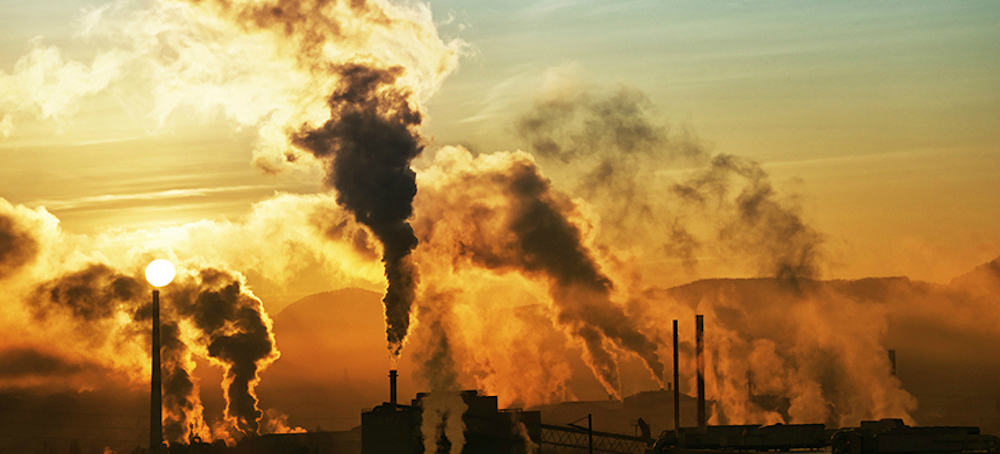World’s Carbon Removal Must Increase by 4x to Reach Climate Targets, Research Finds
Cristen Hemingway Jaynes EcoWatch Pollution from a factory. (photo: Science Focus)
Pollution from a factory. (photo: Science Focus)
The report found that it will be necessary to remove roughly 7.72 to 9.92 billion tons of carbon from the atmosphere each year by 2050 to meet the Paris Agreement goal of limiting global heating to 1.5 degrees Celsius, a press release from University of Oxford said.
The researchers emphasized that carbon emissions reductions will continue to be the main avenue to achieving net zero, but CDR will also be crucial.
“Given the world is off track from the decarbonisation required to meet the Paris temperature goal, this shows the need to increase investment in CDR as well as for zero-emission solutions across the board,” said Dr. Steve Smith of University of Oxford’s Smith School of Enterprise and the Environment in the press release.
In order to come up with a “Paris-consistent” CDR range, the researchers factored sustainability criteria into their analysis, including multiple sustainable development goals.
“Deploying a diverse CDR portfolio is a more robust strategy than focusing on just one or two methods. Research, invention, and investment in start-ups show diversification across CDR methods. However, current deployment and government proposals for future implementation are more concentrated on conventional CDR, mainly from forestry,” said Dr. Oliver Geden, a senior fellow with the German Institute for International and Security Affairs, in the press release.
Two billion tons of carbon are being removed annually by CDR, primarily through conventional means like tree planting. Newer methods, such as enhanced rock weathering, biochar, bioenergy with carbon capture and storage and direct air carbon capture and storage, account for 1.43 million tons each year — less than 0.1 percent. Permanent removal methods make up less than 0.05 percent, or 0.66 million tons, per year.
“There are some encouraging signs in the growth and diversity of CDR research and innovations. But these are tempered strongly by sparse and precarious long-term demand. Governments have a decisive role to play now in creating the conditions for CDR to scale sustainably,” Smith said.
More than 50 international experts contributed to The State of Carbon Dioxide Removal report. It is one of the world’s leading scientific analyses of how much carbon will need to be removed in order to limit climate change, as well as whether we are on course to succeed.
The authors said that while CDR research, start-ups and public awareness have grown rapidly, there are multiple indicators of a development slowdown. They explained that few of the new methods are currently being targeted in government proposals and policies to scale CDR, which makes up only 1.1 percent of investment in start-ups related to climate-tech.
“It is clear that delaying crucial emissions reductions only exacerbates needed mitigation in the future to limit warming well below 2°C, but there are limits to the role sustainable CDR can play the longer the world delays,” said Matthew J. Gidden, an International Institute for Applied Systems Analysis scholar, in the press release.
The authors encouraged governments to put policies into place to increase CDR demand. They said these policies should be embedded into the United Nations Framework Convention on Climate Change’s Nationally Determined Contributions, and that governments should develop improved reporting, verification and monitoring systems. Currently much of the CDR demand comes from voluntary corporate commitments to purchase carbon removal credits.
“To meet the Paris Agreement, any kind of climate mitigation must be done sustainably. This report finds that the more sustainable scenarios have higher amounts of emissions reductions and therefore deploy less CDR cumulatively. For the CDR that is needed, it is vital that environmental and social sustainability are explicitly embedded into planning and policy to minimize risks and maximize co-benefits,” said Dr. Stephanie Roe, lead scientist with WWF’s Global Climate and Energy, in the press release.



